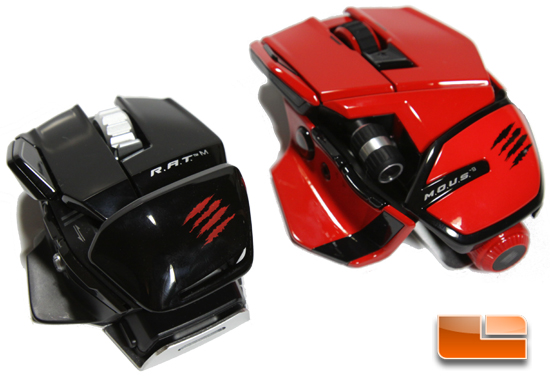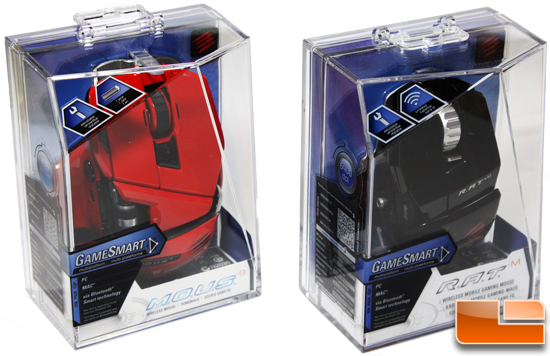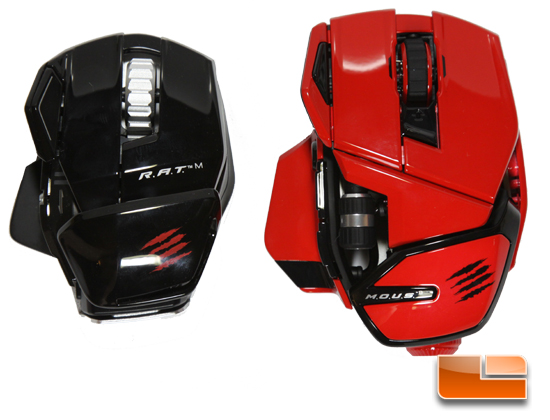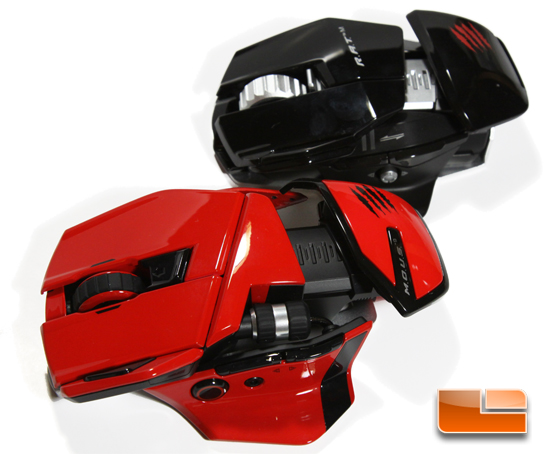Mad Catz R.A.T. M and M.O.U.S. 9 Gaming Mice Review
Introducing the R.A.T. M and M.O.U.S. 9
When I first received the R.A.T. M and M.O.U.S. 9 review samples, it didn’t immediately strike me that Mad Catz’s newest computer mice looked strange. I became desensitized to the R.A.T.s’ unusual modular appearance and extra scroll wheel long before Mad Catz began to phase out the Cyborg branding. Yet, I am now reminded of this reality after noticing the curious amusement of nearly everyone who saw me use these mice. My friends commonly remarked along the lines of “That looks like a transforming mouse” and “It looks like a car.”

Gauging public opinion was not the reason why I took both of these mice wherever I took my laptop. The R.A.T. M and M.O.U.S. 9 are mobility focused designs and it was in the interest of this review to see how well these mice would travel. Mad Catz has made use of Bluetooth Smart, the newest Bluetooth specification that uses a dual-mode low energy radio. This not only makes the new R.A.T. mice wireless, but the low power Bluetooth grants up to 1-year of battery life.

The R.A.T. M is an entirely new compact mouse that follows in the flavor of the other and larger R.A.T.s. It’s notable gaming mouse features are its 6400 DPI laser sensor, two programmable modes, and a 5D multidirectional tilting button that brings the number of customizable buttons to 10.
Followers of the R.A.T. mice will immediately notice the M.O.U.S. 9 looks like the older R.A.T.s. Despite what its suffix suggests, the M.O.U.S. 9’s design only resembles the R.A.T. 9 and the new M.O.U.S. designation is directed towards office users. New to the M.O.U.S. 9 is a tilting scroll wheel that brings the effective programmable button count to 10. This mouse tracks at a constant 990 DPI as a result of Mad Catz decision to use a laser sensor that can track on glass surfaces.

Technical Specifications
|
R.A.T. M |
M.O.U.S. 9 |
R.A.T. 5 |
R.A.T. 9 |
|
|
Sensor |
Laser |
Laser (Track on glass) |
Laser |
Laser |
|
DPI |
25-6400 |
990 |
100-5600 |
25-6400 |
|
Acceleration |
50G |
8G |
50G |
50G |
|
Polling Rate |
120Hz |
125Hz |
1000Hz |
1000Hz |
|
Tracking Speed |
Up to 6 m/s |
Up to 0.8 m/s |
Up to 6 m/s |
Up to 6 m/s |
|
Programmable Buttons |
10 (with 5D buttons) |
10 |
6 |
6 |
|
Profile Switching |
2 DPI levels only |
None |
Yes, 3 |
Yes, 3 |
|
Adjustable Palm Rest |
Yes |
Yes |
Yes |
Yes |
|
Interchangeable pieces |
No |
No |
No |
Yes |
|
Removable Weights |
No |
No |
Yes |
Yes |
|
Connectivity |
Bluetooth |
Bluetooth |
USB Wired |
2.4 GHz RF Wireless |
|
Power |
2x AAA batteries |
1x AA battery |
USB Wired |
Proprietary rechargeable batteries |
|
Battery Life |
1 Year |
1 Year |
N/A |
9 Hours |
|
Street Price |

Both the R.A.T. M and the M.O.U.S. 9 are available in four different finishes – gloss red, gloss white, gloss black, and matte black. The review samples we have are the gloss black R.A.T. M and the gloss red M.O.U.S. 9.
Both the R.A.T. M and the M.O.U.S. 9 both come with 2-year warranties and each can be found respectively for $122.83 and $127.02 on Amazon. That’s expensive as far as computer mice are concerned and we’ll have to determine if the new mobility features justify the heavy price premium especially when most of the older R.A.T. mice can be found for less money.

Comments are closed.